Would you like to keep your characterful original windows, save money on heating bills and stay warmer in winter? CosyGlazing secondary glazing could be the solution.
With those aims in mind, along with our mission to be as environmentally friendly as possible, Mitchell & Dickinson created CosyGlazing, our advanced secondary glazing system.
It’s a unique secondary glazing system developed and tested over seven years that is elegant, effective and unobtrusive. We use plexiglass – a modern, lightweight equivalent to glass that’s used in the aeronautical industry – to provide a second layer to your period windows.
It’s effectively double glazing without you having to lose your original windows.
- CosyGlazing is perfect for sash windows in period homes and listed properties
- CosyGlazing reduces heat loss from single glazed windows by 70%
- CosyGlazing fits to every type of window and you can open your windows as usual
- CosyGlazing is removable and invisible from the outside and so conforms to conservation requirements for Grade 1 and Grade 2 listed buildings
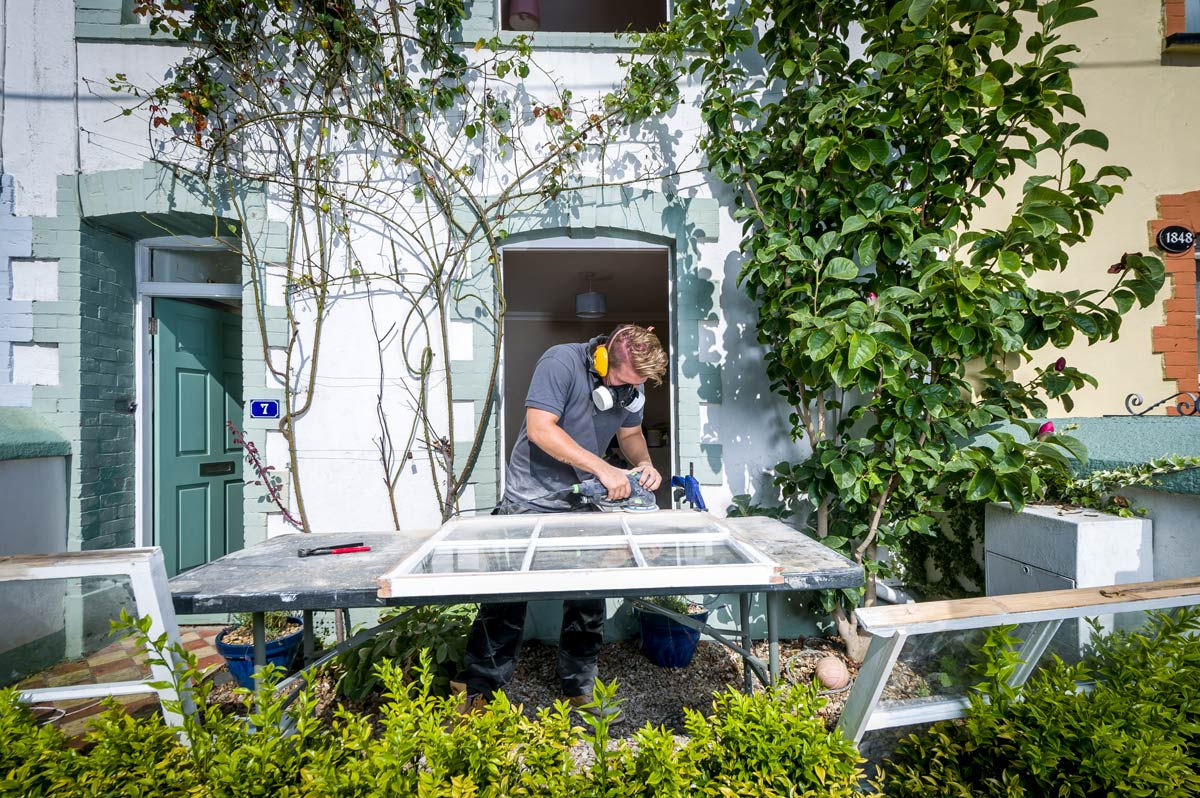
The solution for period homes and listed properties
The CosyGlazing Secondary Glazing system was designed specifically for period homes and listed properties. We have a huge amount of experience installing secondary glazing to older properties across the South and West. One major advantage of our system is that it helps improve the thermal properties of your windows without losing their aesthetic appeal.
Our innovative secondary glazing and insulation solutions are well suited to preserving Cornwall’s celebrated architecture, fine examples of which can be found in areas such as Redruth, Falmouth, St Austell, Truro, Newquay, Penzance, Saltash, Bodmin, Helston, St Ives, as well as St Blazey, Liskeard, Launceston, Hayle, Torpoint, Bude, Wadebridge, Callington, Looe plus other areas in this magnificent county.
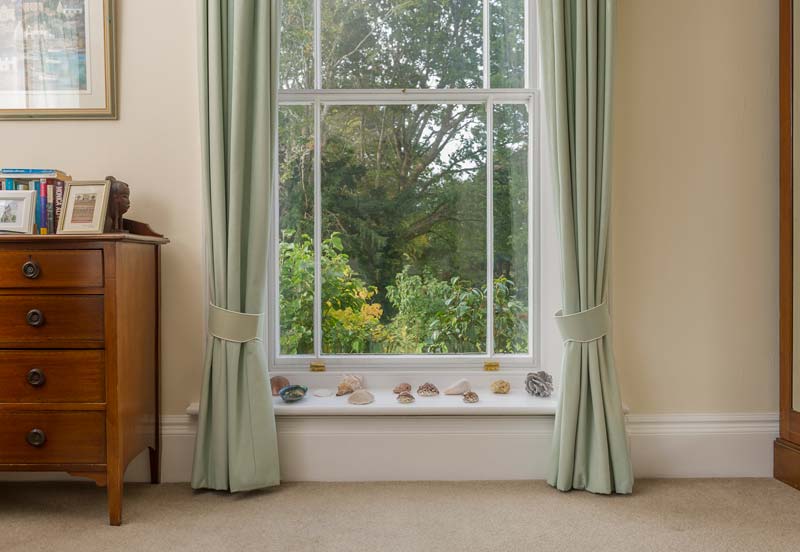
CosyGlazing magnetic secondary glazing
So that your CosyGlazing secondary glazing units can occasionally be removed to be cleaned, it is fixed using high-tech magnetic tape, which is adhered using the same technology used to hold the glass on The Gherkin.
To make the CosyGlazing secondary glazing unobtrusive and smart, we supply it in white, black or in a colour-matched frame to complement your property.
If you choose CosyGlazing in addition to our window restoration service, you’ll end up with expertly restored windows with matching virtually invisible secondary glazing and smart fittings that will find you looking at your windows as much as looking through them.
Stronger than glass
Plexiglass is an excellent solution because it’s both shatterproof and stronger than glass, as well as being seven times more effective as an insulator. It can be scuffed a little more easily than glass, but this does not occur in normal use and can be polished out. More often than not it reduces, but is not guaranteed to eradicate, condensation. Being reversible and invisible from the outside, it complies with rules for listed buildings.
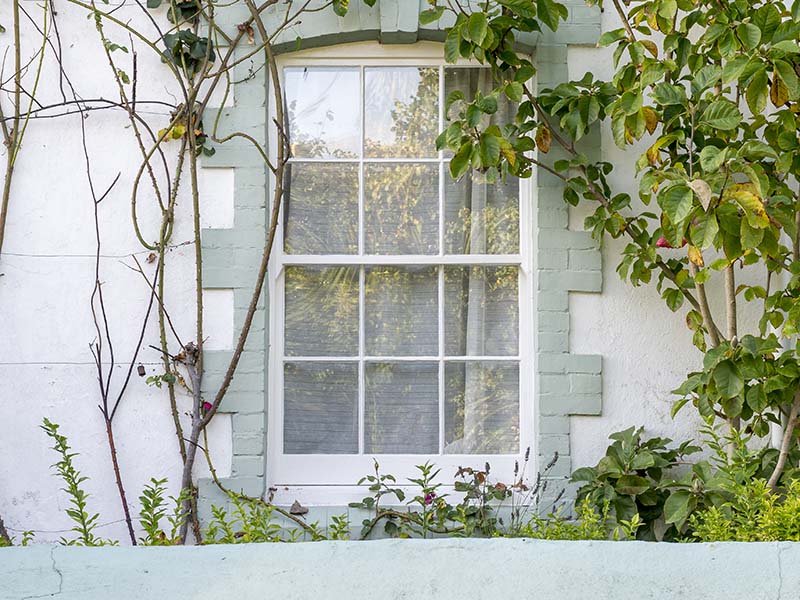
Our CosyGlazing secondary glazing is perfect for sash windows, casements and stone mullioned windows
Our integrated system of CosyGlazing secondary glazing for sash windows allows you to slide the sashes open as usual while the CosyGlazing remains in place. As part of the fitting service, our sash window craftsmen reengineer the window, remove excess paint, release stiff sashes, replace chords and pulleys, balance weights and fit new beading with a concealed brush strip. They also install concealed draught proofing brushes to the meeting rail and make clever modifications to accommodate the CosyGlazing units. Your thermally efficient, draught-free sash windows will then open smoothly.
For casement windows, CosyGlazing sits perfectly either on the window frame, for a fixed solution. Or if you want your windows to open and close as they always have, we have developed modified traditional catches and stays to allow for the CosyGlazing unit to be fitted directly to the casement. This, together with concealed draught proofing routed into every edge of the casement, will ensure your casement window functions beautifully and keep you warm and cosy too.
Stone mullioned windows can be tricky where stone reveals are uneven, but with precise craftsmanship we can fit an elegant timber frame to the shape of the reveal to provide a fixing for the CosyGlazing system. This can be matched to the aesthetic of your original listed window design so it is invisible from the outside. Our customers are delighted with the results.
We can CosyGlaze all kinds of shapes including arched windows, occulus windows, York sliders, even lighthouse windows and curved windows, improving the thermal efficiency, warmth and comfort of your beautiful heritage home.
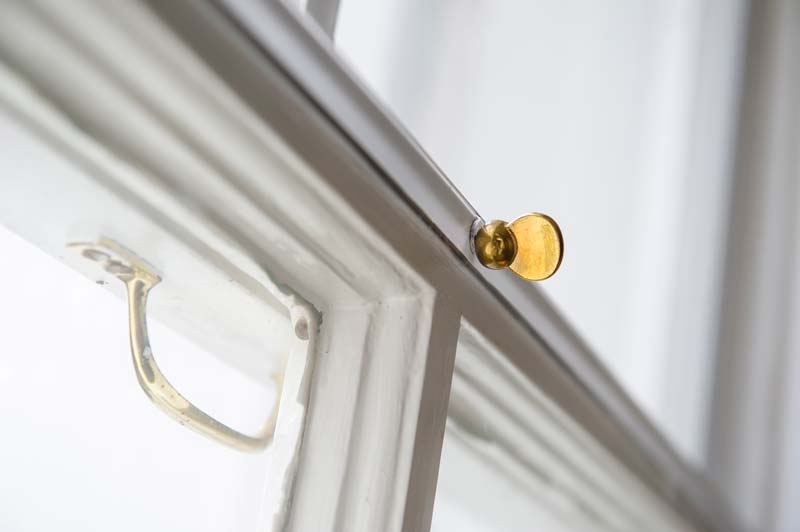
Fitting CosyGlazing with shutters
Many of our customers have original shutters in their listed or period homes. Because we custom design each CosyGlazing installation to work with original features, our integrated sash and casement window options can usually be fitted without the need to adjust original shutters.
Fixed sash and casement solutions sometimes require slight adjustment to the shutter positioning so that they work in conjunction with CosyGlazing. We discreetly do this (usually adjusting the hinges), so there is no sign we’ve made any changes at all. Often shutter knobs can spoil on the CosyGlazing but our expert craftsmen can either reposition them or replace them for flush pulls. We have even made bespoke knobs to match originals or had them forged in the original style.
Triple glazing
Many owners of older properties have double-glazed windows that are not as efficient as they could be, but would rather not send their existing windows into landfill and replace them with new ones. As well as improving thermal efficiency of single-glazed windows, our CosyGlazing system can also be installed to add an extra layer of thermal efficiency to double-glazed windows to make them effectively triple glazed. This can improve the warmth and comfort of older style double glazing, saving even more energy and CO2.
We can install a triple glazing layer of CosyGlazing to most sash windows so that they open and close in the same way they always have. We can also add panels of CosyGlazing to casements, to provide a triple glazing effect.
Some of our secondary glazing projects
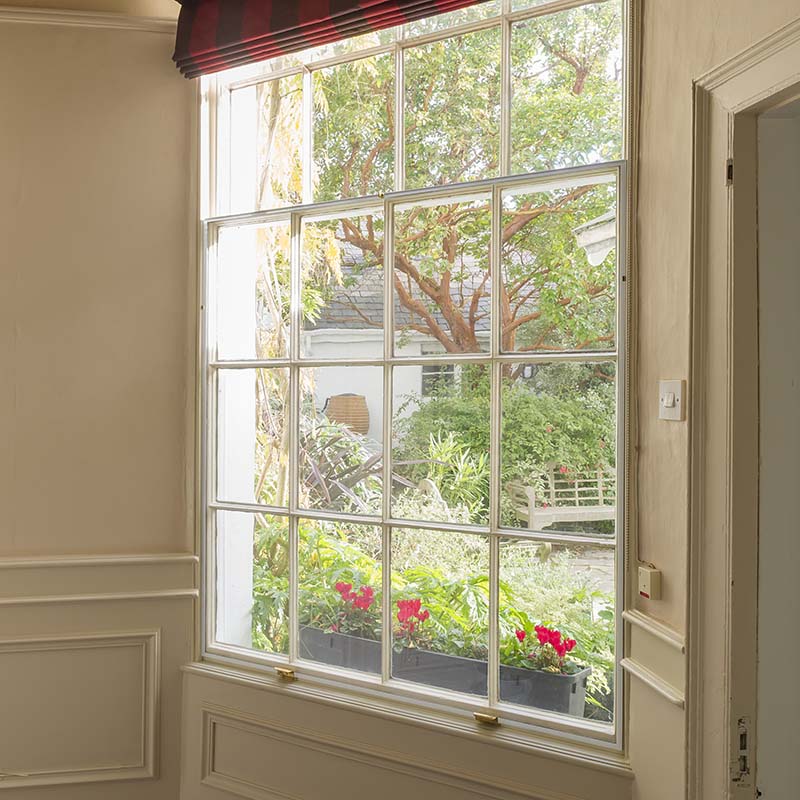

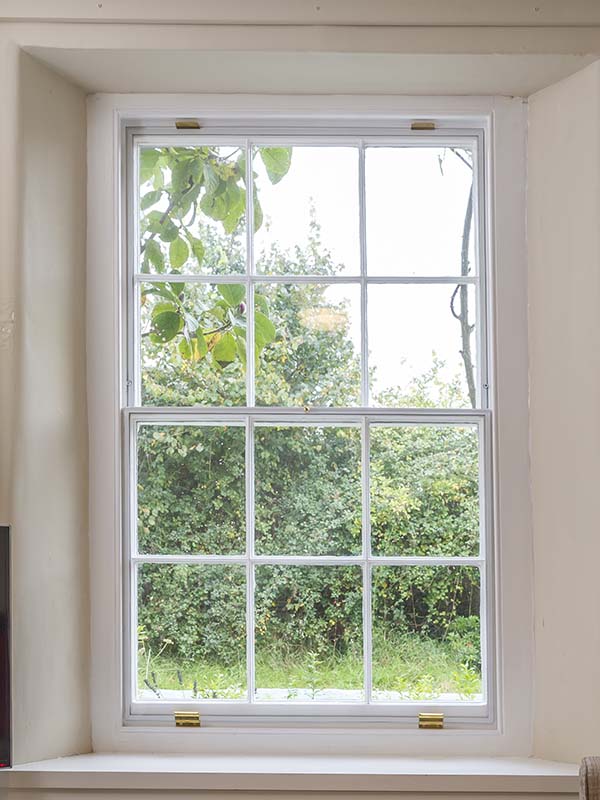
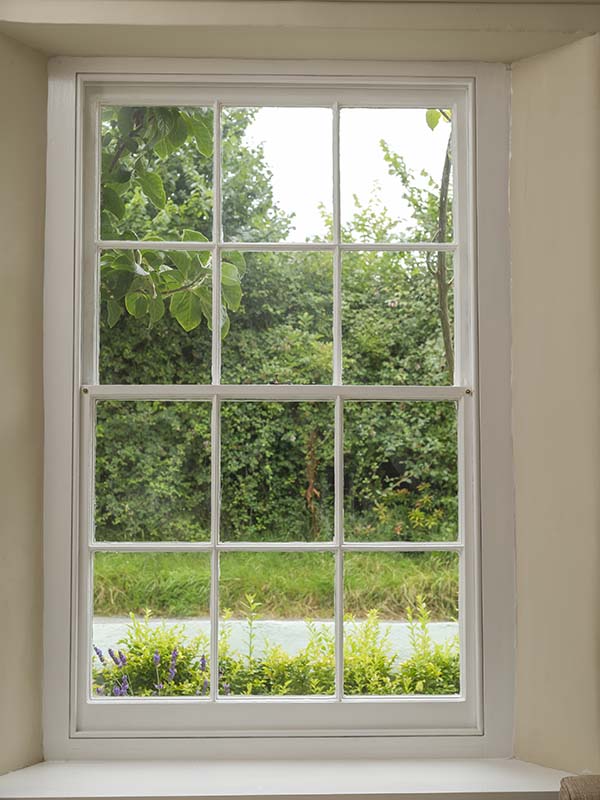
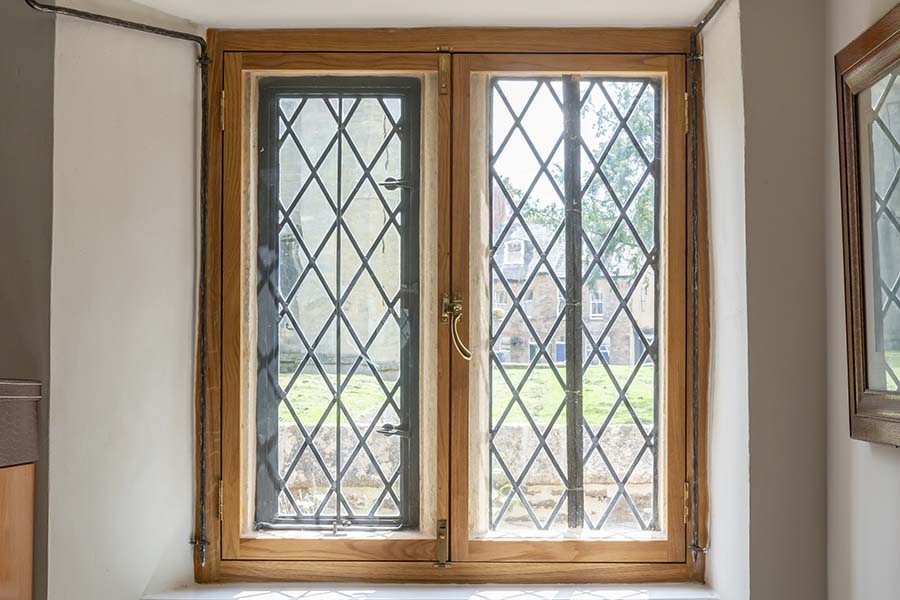
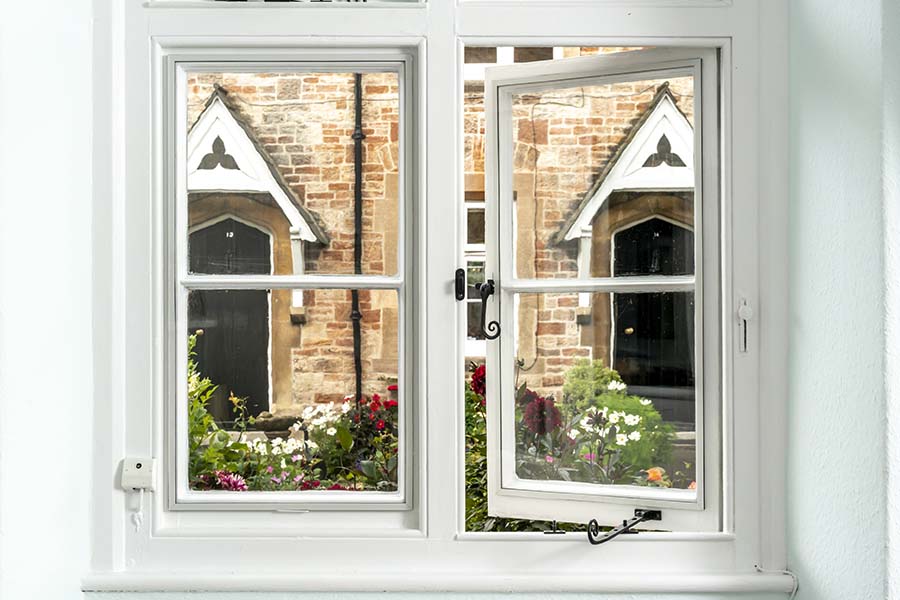
Your secondary glazing questions answered
Secondary glazing allows you to keep your original single-glazed windows whilst improving their thermal efficiency. This means your heat loss through your windows can be reduced dramatically, which in turn will help to keep you warmer and reduce your energy bills.
At Mitchell & Dickinson, we have over 15 years’ experience helping owners of period and listed properties. We know that installing secondary glazing and insulation is the best way to keep your home warm, reduce energy bills and reduce your carbon footprint.
CosyGlazing is Mitchell & Dickinson’s award-winning and advanced secondary glazing system developed especially for period and listed properties. It is an elegant, virtually invisible secondary glazing solution which provides you with warmth and comfort. The fully integrated CosyGlazing solution enables you to still open and close your windows as you always have. It’s completely removable for cleaning and maintenance, and so meets with conservation officers’ requirements, and there is no additional frame required like with traditional forms of secondary glazing.
Yes, there are DIY secondary glazing kits which you can find online, although we cannot vouch for their overall efficiency. If you do not need to ever open your windows then a DIY solution may be adequate, although of course it would not come with a guarantee and lifespans differ from product to product.
Period properties tend to have unusually shaped windows that are often not level and, as a result, a DIY solution can be tricky to install. Our CosyGlazing system is fully integrated with your windows. Your ironmongery and catches are modified to work with the CosyGlazing system to provide maximum efficiency. Your windows will be completely reengineered and fully draught proofed by our specialist craftsmen so they can open and close perfectly, and as originally designed.
With our CosyGlazing secondary glazing in place, you will feel the difference in warmth and comfort of your home immediately. Employing specialists to fit your secondary glazing ensures a professional installation, which is guaranteed, and saves you the stress of doing it yourself.
In most cases, secondary glazing is considered a “permitted development” and doesn’t require planning permission. However, exceptions may apply, especially in conservation areas or for listed buildings. We recommend checking with your local planning authority for specific guidance.
No, the design of the system is such that is should be virtually invisible from the outside and the inside.
We install a specially modified catch/stay that can accommodate the CosyGlazing units on the window. You will still be able to open and close the windows as usual with our award-winning system.
When we re-engineer your sliding sash we will add weights to accommodate the weight of the CosyGlazing unit that is attached to the frame of your window using magnetic tapes. Some modifications are also made to the meeting rails to enable the casements to pass each other with the CosyGlazing unit fitted to the frame. Some windows can be more challenging than others, but bespoke and hand-crafted solutions are what we do to the highest standards.
Most period homes have specific hardware such as monkey tail or pig tail catches and stays, and particular locks etc. We usually replace your original hardware with a like-for-like but modified alternative to meet the crafted CosyGlazing panel. But where we are required to, we can usually modify the original hardware where it is essential to the listing of the property. There are of course some situations where this is not possible and your surveyor can advise you accordingly.
There are two sources of condensation. The first is caused by warm, moist air from inside the room touching the cold glass and condensing. This is reduced by CosyGlazing but we cannot guarantee it will eradicate it completely. The second is caused by external sources of moisture from the building fabric such as from broken putty allowing rain to leak in under each pane of glass and settle on the lower glazing bars, particularly after rainfall. Secondary glazing traps this water in the void, which can cause condensation. Therefore when installing CosyGlazing, it is advisable to keep putty and paintwork in good condition. This also increases the life of the window.
The cost of secondary glazing varies based on factors such as window size, type and installation complexity (for example, flat panels won’t allow you to open your windows without removing the panel first but will be the lowest cost). For a personalised quote, please contact Mitchell & Dickinson.
The installation time depends on the project’s scope and complexity. Generally, secondary glazing installation is a quicker process than installing new windows. Our team of expert craftsmen at Mitchell & Dickinson strive to minimise disruption and complete installations efficiently.
The effectiveness of secondary glazing depends on various factors, including your original frame materials and installation quality. Mitchell & Dickinson offers CosyGlazing, a high-quality bespoke secondary glazing solution tailored to meet specific needs and providing optimal performance. It is made to fit your specific windows using a material called plexiglass, which has a guarantee of 30 years.
Both secondary glazing and double glazing offer unique benefits. Secondary glazing is often preferred for heritage properties, where preserving the original window aesthetics is crucial. Mitchell & Dickinson can guide you in choosing the most suitable option for your property based on your preferences and requirements.
Secondary glazing enhances thermal insulation, reducing heat loss by up to 70% and improving energy efficiency The amount of heat saved depends on factors like the quality of installation and the type of material used. Mitchell & Dickinson’s CosyGlazing secondary glazing solution is designed to optimize energy efficiency and has a U value of 1.7.
Magnetic secondary glazing is a convenient and effective option for owners of period and listed properties or where the homeowner wishes to retain the original windows. Its performance depends on the quality of materials and installation. Mitchell & Dickinson offers its high-quality bespoke magnetic secondary glazing solution called CosyGlazing, designed to provide optimal thermal and , where required can also provide optimal acoustic benefits.
CosyGlazing is perfect for sash and casement windows in period homes and listed properties, but can also be fitted to every type of window including metal and stone mullions as well as doors with glazed areas, such as French doors.
Yes with the CosyGlazing integrated secondary glazing solution you will be able to open and close your windows just as you always have done. However, if you have metal windows we may need to design a bespoke solution to provide for window opening.
Yes, your CosyGlazing secondary glazing can be removed using suction lifts which are provided by Mitchell & Dickinson for all installations. You can then clean your original windows and the CosyGlazing units before popping them back on.
Yes, CosyGlazing can be matched exactly to your current window colour. We can use your original paint colour to create a CosyGlazing unit complete with our Colour Match trim so that the secondary glazing blends in completely with your window.
In most cases, we can handcraft a solution to enable your shutters to work with our CosyGlazing system.
Mitchell & Dickinson’s policy is always to restore rather than replace in all aspects of its work. We are often able to design a bespoke sealing solution. However, some metal or leaded windows may require the input of metal/leaded window specialists.
When we complete your survey, the surveyor will request information on your current energy usage and bills. We can then calculate financial and energy savings projections, which we will send to you with your insulation quotation.
Being much stronger but softer than glass, plexiglas can get scuffed by abrasives. However, scuffs can be polished out and, in our experience of fitting over 1,000 windows, we find that in normal use CosyGlazing does not scuff. Unlike early forms of perspex, plexiglass is fully UV-proof and carries a 30-year manufacturer’s guarantee against UV damage.
Mitchell & Dickinson has been testing magnetic tape for 15 years with no weakening of magnets. The adhesive is a very high-quality adhesive tape made by TESA which has a very long life. On rare occasions, it has been known to delaminate on specific surfaces which contain high levels of oils (such as linseed oil, for example).
When we install insulation measures, we will paint any areas that will be affected during our work to make good to the existing finish. If, for example, your windows are decorated to a specific colour, we will need details of your paint finish so that we can match it.
Where your windows have not been decorated for some time you may find that the areas we make good are to a different shade of paint. Customers are advised to consider this and may wish to arrange for decorating to take place after our installation is completed to get a matching paint finish.
Mitchell & Dickinson does not provide a full painting and decorating service. However, we do so occasionally as part of a major installation, under special circumstances and subject to a separate detailed quotation for decorating.
Decorating is not recommended in winter months. To protect timbers and prevent water ingress, paint needs to form a strong bond with timbers. The wood needs to be dry when the paint is applied. In addition, each coat of paint needs to cure, which takes longer in wet and cold conditions. The optimal time of year for full painting and decorating is between April and October, as these are generally the dryer and warmer months of the year.
Where we are doing substantial restoration work followed by CosyGlazing you may prefer to arrange for decorating to take place after our installation is fully completed.
Where we are installing draught proofing and CosyGlazing only, and restoration work is minimal, there is a slight advantage to decorating before we arrive, as it will be quicker and easier for your decorators to do their work before ours. However, in most cases, we’ll need to remove staff beads on sash windows, which we will then repaint as part of our work.
Where customers wish to arrange for decoration in advance of our installation, we will need to be sure that all paint finishes are completely dry and any cure time for specialist paints has been observed as per the manufacturer’s instructions before we arrive to complete your installation.
Please note: the instructions on the paint tin are for drying and over-coating times, however, paint takes much longer to cure fully. Therefore, we recommend an absolute minimum of one week after decorating is finished, and two weeks should you be decorating at colder times of year. Some oil-based or specialist heritage paints can take a month or more to dry completely.
If you have any particular paint colours or newly decorated joinery, we will need to match that same paint to paint the areas we disturb when we complete your installation. With that in mind, you will need to provide us with paint details (make and colour) if you require us to supply paint. Or you will need to ensure that the correct paint is readily available for our craftsmen on arrival.
Our craftsmen can provide the paint for standard white gloss or satin finishes, but any special white shades will need to be matched exactly where a specific finish is required.
External painting and decorating:
Most good decorators already know that a professional external paint job forms a durable, protective skin against the elements and that stops all moisture from penetrating the putty and timbers. The more coats of paint that are applied the greater the strength of the paint seal to withstand intense sunlight and the expansion and contraction of the timbers across the seasons. It’s interesting to know that some joinery firms supply their windows with 15 coats of paint! If only two or three coats are applied there is a greater chance that sun will break through the seal within two to three years. It is therefore advantageous to paint every two to three years initially and build up a thick layer of paint, and after that decorating can be done every five years or so.
A poor paint seal will mean rain can penetrate the paint and enter the putty and timbers. This will gradually saturate the timbers and soak through to the inside. Saturated timbers are one of the causes of condensation on the inside of the original glazing. It can also result in long-term waterlogging of timbers, which take a long time to dry out and can result in rotten windows. It is therefore important for external painting that the paint seal goes over the timber and over the edge of the putty and bonds well onto the glass to prevent rainwater ingress between the putty and the glass in future.
It is widely recommended that, for good maintenance, wooden windows and doors are repainted once every 3 to 5 years depending on environmental conditions. Properties in marine or semi marine conditions for example will require more frequent painting than those in sheltered, built up residential inland areas with little weathering. Usually the south or south west elevation of a property will require more frequent repainting than others as the southerly elevations ‘get all the weather’ i.e. intensity of sunlight in summer, and wind and rain in winter compared with the north facing elevations.
Many professional painters and decorators will undertake epoxy resin repairs to rotten glazing bars and other joinery components before painting. Putty repairs must be undertaken, where required, before painting so that water ingress is prevented and a complete seal to the external elements is achieved.
Internal decorating:
It is important to ensure that windows are kept open until dried completely and that excess paint is removed to ensure that windows are not painted shut or become sticky/difficult to operate. When we have completed your installation, your windows will have been completely re-engineered to open and close smoothly (where they were designed to be opening windows) and it is a shame if decorating afterwards results in sticky windows or windows painted shut.
Similarly, your decorators mustn’t paint the draught-proofing brushes installed in your windows (routed into the frames, or in the parting and staff beads) or the sash cords in sash windows, as this will greatly reduce their life. Once painted, the little brushes are compacted together, become brittle, and can even break off. This means they will no longer form a good seal to work effectively to prevent draughts and insulate your home. Once the sash cords are painted, they no longer run as well on the pulleys that they rely on to operate smoothly. This means our work to give you smooth and easy opening windows is undone.
It is better to avoid painting the ‘B’ tape (the grey magnetic tape adhered to your actual window frame) when decorating, but if a little paint gets onto the tape then it will not impact its magnetic polarity.
If you want to paint your grey tape white, or a colour to match your windows, you can do so provided you apply a coat of white Hammerite Smooth metal paint before any other paint to match the colour of your windows. Hammerite Smooth is the only paint that adheres to the magnetic tape and acts as an undercoat for your preferred paint type and colour.







